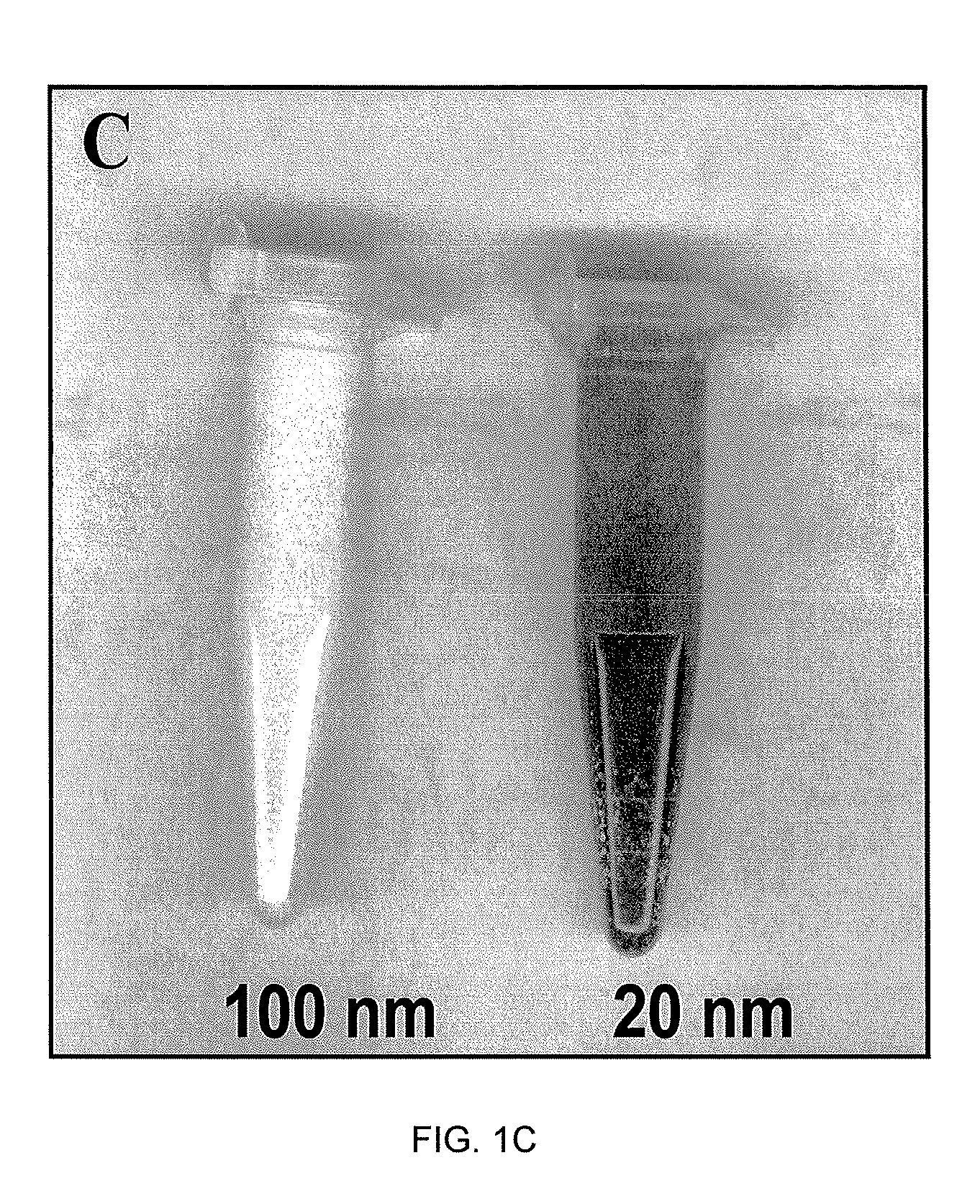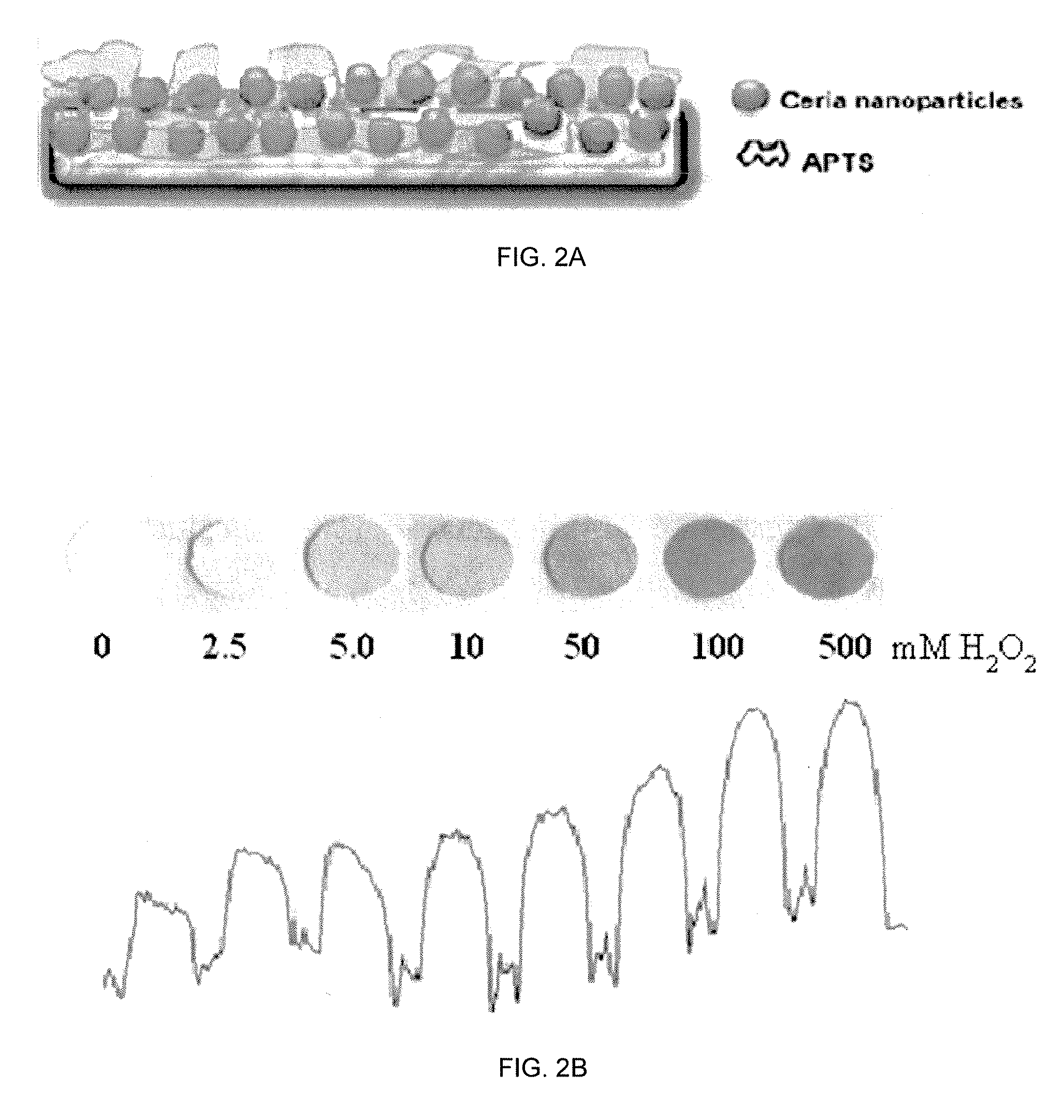Reagentless Ceria-Based Colorimetric Sensor
a colorimetric sensor and reagentless technology, applied in chemical methods analysis, instruments, water testing, etc., can solve the problems of expensive catalysts, sensor interference, limited detection of hydrogen peroxide and superoxide radicals, etc., and achieve easy fabrication and reagentless, the effect of expanding the range of analytes
- Summary
- Abstract
- Description
- Claims
- Application Information
AI Technical Summary
Benefits of technology
Problems solved by technology
Method used
Image
Examples
Embodiment Construction
[0037]The colorimetric test device described herein is the first reporting the use of cerium oxide nano-particles as a color indicator agent for quantitative analytical purposes. The present invention takes advantage of the color changes of ceria nanoparticles as a result of a redox process and complex formation. In particular, cerium oxide particles with a diameter ranging from 2 nm to 20 nm in colloidal solution or immobilized onto a solid support change the color almost instantaneously from white to reddish-orange in the presence of hydrogen peroxide or antioxidants. The color change is due to a change in the oxidation state of cerium from Ce(III) to Ce(IV) and formation of a cerium (IV) complex with hydrogen peroxide. This change is proportional with the concentration of hydrogen peroxide (FIGS. 1A and 1B) or antioxidants such as ascorbic acid, gallic acid, vanillic acid, caffeic acid, trolox, resveratrol, and / or quercetin, for example, in the reaction. This process is used as a...
PUM
 Login to View More
Login to View More Abstract
Description
Claims
Application Information
 Login to View More
Login to View More - R&D
- Intellectual Property
- Life Sciences
- Materials
- Tech Scout
- Unparalleled Data Quality
- Higher Quality Content
- 60% Fewer Hallucinations
Browse by: Latest US Patents, China's latest patents, Technical Efficacy Thesaurus, Application Domain, Technology Topic, Popular Technical Reports.
© 2025 PatSnap. All rights reserved.Legal|Privacy policy|Modern Slavery Act Transparency Statement|Sitemap|About US| Contact US: help@patsnap.com



